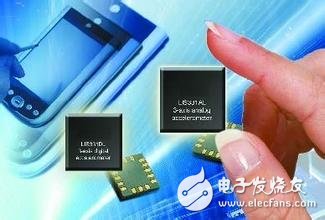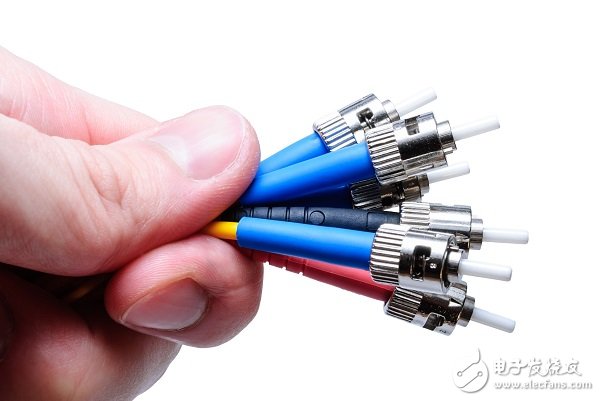The sensor (English name: transducer/sensor) is a detection device that can sense the measured information and can transform the sensed information into an electrical signal or other required form of information output to meet the information. Requirements for transmission, processing, storage, display, recording and control. It is the first step in achieving automatic detection and automatic control. Sensing technology, together with computer technology and communication technology, is called the three pillars of information technology. From the perspective of bionics, if the computer is regarded as the "brain" that processes and identifies information, and the communication system is regarded as the "neural system" that transmits information, then the sensor is the "sensory organ." With the development of related technologies such as sensor technology, data processing technology, computer technology, network communication technology, artificial intelligence technology and parallel computing software and hardware technology, multi-sensor information fusion technology has received extensive attention. With the advancement of science and technology, multi-sensor information fusion has been formed and developed into a specialized technology for information processing, and is quickly applied to industrial robots, intelligent detection, automatic control, traffic management and medical diagnosis. . In the 1990s, China began the research and development of multi-sensor information fusion technology, and developed the application system of multi-sensor identification, positioning and other similar information fusion. Nowadays, multi-sensor information fusion technology is more and more It has received widespread attention. The basic principle of multi-sensor information fusion technology is like the process of human brain comprehensive processing information. Multi-level, multi-space information complementation and optimization combination processing are performed, and finally a consistent interpretation of the observation environment is generated. In this process, multi-source data should be fully utilized for rational control and use, and the ultimate goal of information fusion is based on the separated observation information obtained by each sensor, and more useful information can be derived through multi-level and multi-faceted combination of information. This not only takes advantage of the synergy of multiple sensors, but also comprehensively processes the data of other information sources to improve the intelligence of the entire sensor system. The multi-sensor fusion system has four notable features: 1. Redundancy of information: For a certain feature of the environment, multiple pieces of information (or multiple different moments of a single sensor) can be obtained, which are redundant and have different reliability. Through fusion processing, more accurate and reliable information can be extracted from it. In addition, the redundancy of information can improve the stability of the system, thus avoiding the impact on the entire system due to the failure of a single sensor. 2. Complementarity of information: Different kinds of sensors can provide different kinds of information for the system. The objects described by these information are different environmental characteristics, and they are complementary to each other. If you define a coordinate space consisting of all features, then the information provided by each sensor belongs to only one subspace of the entire space, independent of the space formed by other sensors. 3. Timeliness of information processing: The processing of each sensor is independent of each other. The entire processing process can adopt parallel heat conduction processing mechanism, so that the system has faster processing speed and provides more timely processing results. 4. Low cost of information processing: Multiple sensors can get the amount of information equivalent to a single sensor at a lower cost. On the other hand, if the information provided by a single sensor is not used to implement other functions, the sum of the cost of a single sensor and the cost of multiple sensors is comparable. Information fusion, as a comprehensive processing of multi-sensor information, has inherent complexity. In the information fusion process, there are three main types of information fusion systems based on the original data processing methods: centralized, distributed, and hybrid. 1. Centralized: The raw data obtained by each sensor is sent directly to the central processor for fusion processing, which can realize real-time fusion. The data processing has high precision and flexible algorithm. The disadvantage is that the processor has high requirements and reliability. Low, large amount of data, it is difficult to achieve. 2. Distributed: Each sensor first performs local processing on the obtained raw data, including preprocessing, classifying and extracting characteristic information of the original data, and making decisions respectively through respective decision criteria, and then sending the results to the fusion center. Fusion to get the final decision. Distributed communication bandwidth requirements are low, computational speed, reliability and continuity are good, but the tracking accuracy is not centralized. 3. Hybrid: In most cases, the above two are combined differently to form a hybrid structure. It retains the advantages of the above two types of systems, but it costs a lot more in communication and computing. However, such systems also have the advantages that are unmatched by the above two types of systems, and such structures are often used in practical situations. Recently, multi-functional integrated sensor research has been widely concerned at home and abroad, and integrated sensors for chemical analysis and biological protection have been successively introduced. With the development of MEMS technology, people can make several sensitive components on the same material to make an integrated multi-function sensor capable of detecting multiple parameters. The multi-function sensor mainly has several different working principles and structural forms. Among them, due to the high integration degree and small volume, the working atmosphere of each sensitive component is the same, and it is easy to realize the advantages of compensation and correction, and several different sensitive components. Making the same silicon wafer and making integrated multi-function sensors will be a direction for the development of multi-function sensors. In addition, the introduction of middleware technology is also a common initiative to achieve multi-sensor integration. Because the sensing data structures provided by different types of sensors are inconsistent, in order to access sensors of different types and different manufacturers, the system should solve the problem of access and processing of heterogeneous sensing data, and the conversion and analysis of interaction protocols between layers. The middleware is an intermediate program that implements data transfer, filtering, data conversion, and transformation and parsing of interactive protocols between the underlying hardware device and the application system. The application of middleware technology and systems is in line with the current development of the security market. The existing security systems mainly consist of the following features: 1 Security system software is mainly dedicated C/S architecture software provided by security equipment manufacturers. Usually, this software can only identify one or several products of the device manufacturer, and cannot be compatible with other manufacturers' products. The internal communication protocol and information format are completely closed, resulting in poor scalability. And because of the shortcomings of the C/S architecture software itself, such as pre-installation and inability to unify the upgrade, once the device provider has a new product, the original software cannot be compatible with the product, and only the system can be upgraded first. Then let all users reinstall it, which greatly reduces the user experience. At the same time, the cost of development, maintenance and upgrade is greatly improved for the manufacturer, and the compatibility and scalability of the system are poor. 2 Some security systems are single systems that target only one type of security device, or integrate multiple subsystems, but each subsystem works independently. Each subsystem must be monitored separately, which will consume a lot of manpower and material resources; and the same event causes each system to independently alarm, causing the monitoring personnel to think that it is two unrelated alarms, which will bring a lot of inconvenience to the monitoring personnel, resulting in Waste of human resources. Our actual project requirements are: access to different types and different manufacturers of sensor devices, including infrared sensors, temperature sensors and cameras; user experience is good, no need to install before using the software, as long as the network can be connected Under the browser, you can view real-time alarm information; maintainability is good, if the system is updated and upgraded, you only need to update the server-side code, instead of upgrading all client software; form a whole Security system, not individual subsystems work alone; different types of sensors can cooperate with each other to provide more comprehensive alarm information; high degree of intelligence, monitoring personnel do not need to monitor the video wall 7*24 time, once there is When an abnormal situation occurs, the system will automatically analyze and notify the monitoring personnel by means of images, sounds, and text messages, and also record the alarm time period, so that it is not necessary to find abnormal images from a large number of monitoring videos afterwards. Aiming at these demands, the security system that realizes multi-sensor integration function by using middleware technology emerges as the times require. Here, the multi-sensor collaborative alarm security system design based on web technology is taken as an example to briefly explain the relevant elements of system design and application. Single Phase Ac Motor,Ac Single Pole Motors,Single Phase Motor,Single Phase Motor Connection Changzhou Sherry International Trading Co., Ltd. , https://www.sherry-motor.com
